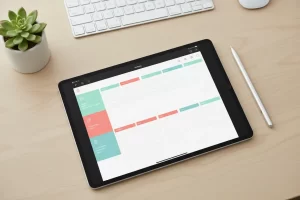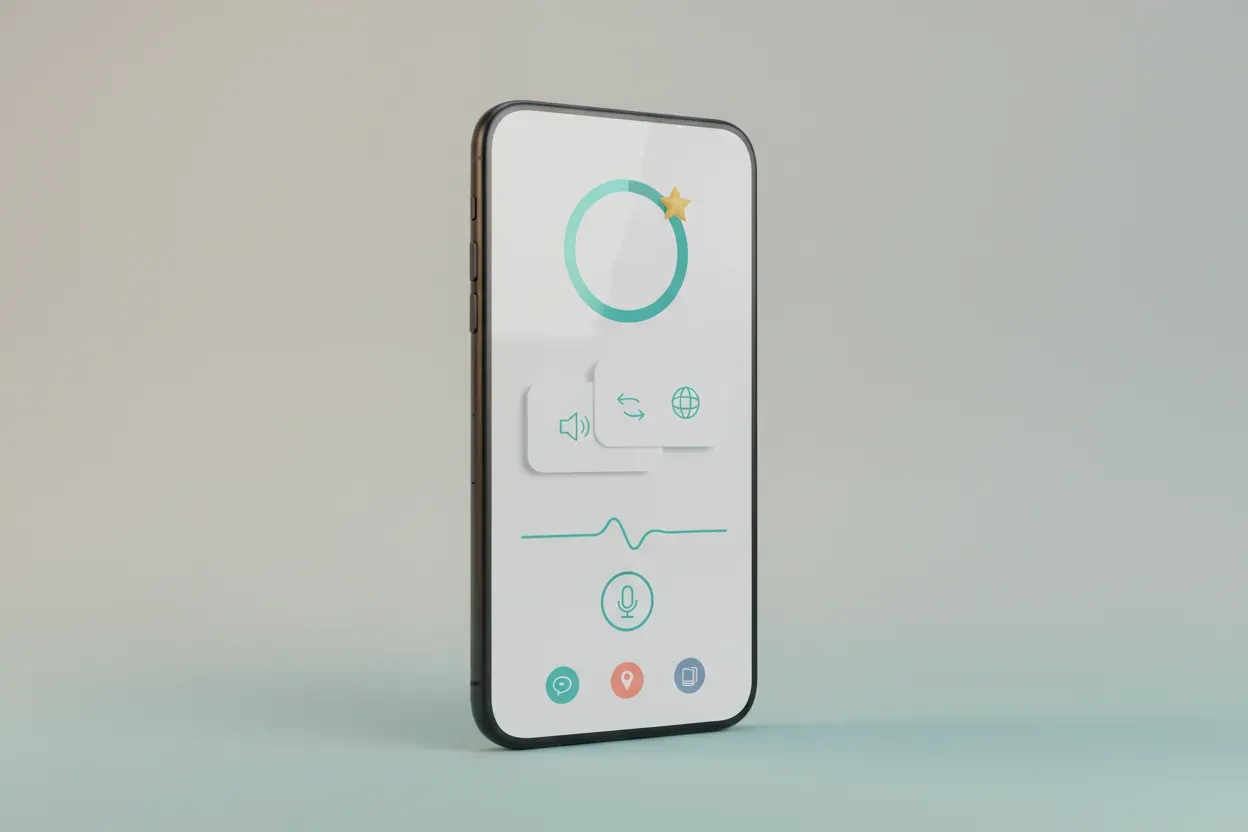How Leaders Best Manage & Track Employee Performance
Effective performance management requires structured systems that provide clear accountability, as revealed by experts in leadership and organizational development. Modern approaches combine goal-setting frameworks like OKRs with regular check-ins and feedback mechanisms to create transparency and shared ownership. Cloud-based tools and digital dashboards transform data into actionable insights, enabling leaders to track progress while empowering employees through continuous coaching.
- OKRs With Biweekly Check-ins Create Shared Ownership
- Clear Goals With Frequent Check-ins Drive Accountability
- Quarterly Reviews Capture Multiple Performance Dimensions
- 360 Degree Feedback Provides Holistic Performance View
- Digital Dashboard Transforms Performance Through Data-Driven Coaching
- Simple Dashboards Link KPIs To Business Outcomes
- Shared KPI Sheet Promotes Transparency Without Blame
- Cloud-Based System Aligns Goals With Measurable Outcomes
- Real-Time OKRs Connect Individual Goals To Results
- Impact Scorecards Focus On Results Not Methods
- Continuous Feedback Turns Data Into Coaching Moments
- Clear Weekly Deliverables Make Performance Self-Directed
- Consistent Check-ins Build Structure And Trust
- OKRs Paired With Regular Feedback Boost Performance
- Ongoing Feedback With OKRs Creates Natural Accountability
OKRs With Biweekly Check-ins Create Shared Ownership
Over the years, I’ve learned that performance management isn’t just about tracking metrics — it’s about creating a system where people understand what’s expected, feel ownership of their goals, and can see their own progress. My preferred method has been to combine outcome-based tracking with regular, human conversations.
Early on, I tried traditional approaches: spreadsheets of deliverables, weekly status updates, even time-tracking tools. The data was clean, but the culture wasn’t. People felt more measured than motivated. That’s when I shifted to a system built around OKRs — objectives and key results — paired with biweekly one-on-one check-ins.
One example that stands out was when we adopted this model with our content team. Instead of focusing only on outputs like “number of blog posts published,” we defined objectives around impact, such as “increase organic engagement on client content by 20% this quarter.” The key results tied back to specific, measurable actions — content quality scores, keyword rankings, audience retention rates. During check-ins, the conversation wasn’t, “Did you finish the task?” but, “How are we progressing toward the bigger outcome, and what support do you need?”
The change was immediate. Employees became more proactive in problem-solving because they understood the “why” behind their work. One writer, for instance, began suggesting new content formats to improve engagement — something she never felt empowered to do when success was measured only by output volume. Productivity didn’t just improve; creativity and ownership did too.
What made this system effective was the balance between structure and trust. The OKRs gave clarity and alignment, while the conversations built accountability without feeling punitive. Employees could see their contributions in the bigger picture, and I could identify areas for improvement in a way that felt collaborative rather than critical.
For me, that’s the heart of performance management: it’s not about catching someone falling short, it’s about building a culture where accountability is shared and improvement feels like a partnership.

Clear Goals With Frequent Check-ins Drive Accountability
My preferred approach to managing and tracking employee performance starts with clarity and consistency. Too many performance systems fail because expectations are vague or only reviewed once a year. What works best is combining clear, measurable goals with frequent, lightweight check-ins. That way accountability isn’t a surprise — it’s built into the rhythm of work.
One system I’ve found particularly effective is OKRs (Objectives and Key Results). At its best, it does more than track outcomes — it connects individual goals to broader business priorities. When employees see how their daily work ladders up to bigger objectives, accountability feels purposeful rather than punitive. In one case, implementing OKRs across a team helped us identify where progress was stalling early on, which meant we could step in with coaching and resources before it became a missed target. Productivity improved because people weren’t working harder, they were working with clearer alignment.
The other key is feedback frequency. Instead of saving everything for quarterly reviews, we moved toward monthly conversations focused on two questions: what’s working well, and what support do you need? That shift created a culture where performance conversations weren’t dreaded — they became opportunities for problem-solving and growth. As a result, we saw engagement rise alongside performance because employees felt supported, not judged.
What I’ve learned is that performance management isn’t about building a perfect system — it’s about creating transparency and trust. Whether it’s OKRs, scorecards, or another framework, the tool matters less than how consistently it’s applied and how well it connects people’s work to impact. Done right, it increases accountability without killing morale, and that balance is what truly drives productivity.
Quarterly Reviews Capture Multiple Performance Dimensions
We rely on quarterly 360-degree reviews that capture customer feedback, product analytics, and collaboration scores. When I first introduced it, I wasn’t sure how the team would take to that level of transparency, but it quickly became a growth driver. For example, one product manager noticed their feature implementations were slower than average; the feedback loop helped them refine communication with design, cutting turnaround time in half. I’ve rolled this system out across teams now, and coaching conversations have become far more targeted. My takeaway: real progress comes when data informs empathy-driven feedback.

360 Degree Feedback Provides Holistic Performance View
360-degree feedback is ideal for tracking performance and identifying development needs.
Top-down manager reviews are notoriously bias-prone, representing a single person’s subjective opinion. Inevitably, this limits the appraisal system’s effectiveness.
Multi-rater feedback, however, incorporates the perspectives of colleagues, managers, and direct reports, providing a holistic view of performance.
This approach is particularly strong when aligned to competencies, values, or other formal frameworks. Manager reviews are often unidimensional, with staff either scoring high or low on everything, but 360 feedback is far more nuanced.
This means that development needs, strengths, and overplayed strengths are easier to identify, greatly helping professional development.
Lumus360 is an excellent platform for hosting and administering 360-degree feedback. Their platform allows us to routinely benchmark performance while providing evidence-based development recommendations.
We have seen an enormous improvement in both performance and retention, and would strongly recommend 360-degree feedback for any organization that is serious about L&D.

Digital Dashboard Transforms Performance Through Data-Driven Coaching
I helped a mid-sized construction firm address high turnover and uneven performance by launching a simple digital dashboard (attendance, task completion, and safety), standardizing monthly one-on-ones with clear goals, introducing a recognition program, and conducting targeted training.
In 6 months, the results were as follows: attendance increased by 22%, project times decreased by 15%, safety incidents decreased by 28%, and overall productivity increased by 19%. The biggest win was a culture shift, as employees took ownership of results and supervisors coached with real-time data.
3 quick takeaways:
1. Track a few key metrics and avoid data overload.
2. Combine numbers with monthly coaching.
3. Reward small wins and close skill gaps with short training.

Simple Dashboards Link KPIs To Business Outcomes
We’ve found that the most effective performance management approach combines clear metrics, transparency, and personal ownership. Each team member works with a small set of measurable KPIs that link directly to business outcomes rather than just tracking activities. Our weekly check-ins focus on results and obstacles without getting bogged down in formal reporting processes.
A performance management system that has significantly improved our productivity is our combination of Notion dashboards with Slack updates. This lightweight solution keeps goals visible to everyone, naturally fosters accountability, and helps us quickly spot areas where additional support or training would be beneficial. What makes this system particularly effective is its simplicity — it keeps teams aligned and engaged without creating administrative burden.

Shared KPI Sheet Promotes Transparency Without Blame
We don’t use performance software; we use a single shared KPI sheet. Every team, every metric, one place. It’s not fancy, but it’s real-time and public. People can see where they stand without waiting for a quarterly review.
It’s less about tracking effort and more about seeing outcomes compound week over week. When a number dips, it sparks a conversation about systems, not blame. The spreadsheet works because it’s brutally transparent; no one hides, no one gets lost. That visibility drives productivity faster than any performance platform we’ve ever tested.

Cloud-Based System Aligns Goals With Measurable Outcomes
Effective performance management starts with clarity, consistency, and real-time insights. Tracking employee performance works best when goals are clearly aligned with measurable outcomes and supported by frequent check-ins rather than relying solely on annual reviews. Implementing a cloud-based performance management system that integrates goal setting, continuous feedback, and analytics has significantly improved accountability and productivity. For example, leveraging a system that combines individual KPIs with team performance dashboards helped identify skill gaps early, enabling timely coaching and targeted training. This approach not only boosted productivity by providing actionable insights but also fostered a culture of transparency and continuous improvement.
Real-Time OKRs Connect Individual Goals To Results
My default performance tracking and management system is a combination of feedback loops and quantifiable goals which work in real-time. OKRs are employed by us to connect individual goals with business results, supplemented with fortnightly meetings on a regular basis for progression, challenges, and capability development. A good system implemented by us correlates performance measurements with peer reviews, not only creating accountability but also revealing collaboration problems within the team which were not visible through numbers. This resulted in quantifiable productivity improvements because it achieved a balance between data-driven insight and human subtlety.

Impact Scorecards Focus On Results Not Methods
The performance management method that transformed employee productivity was implementing “outcome accountability with process flexibility” — tracking results rigorously while giving people complete freedom in how they achieve them.
Traditional performance tracking focuses on activity metrics: hours worked, meetings attended, tasks completed. This creates busy work rather than meaningful results and misses the connection between effort and business impact.
My breakthrough approach centers on “impact scorecards” — each team member has three measurable outcomes directly tied to customer success or business growth. For our customer success specialist, these might be: client satisfaction scores above 4.5, feature adoption rates within 30 days, and expansion revenue generation.
The key difference is that we track results weekly but never dictate methods. People choose their own approaches to achieving outcomes, whether that means customer calls, email campaigns, documentation improvements, or process optimization.
The example that proved this system’s effectiveness involved our developer who was struggling with traditional productivity metrics. Their code output was lower than peers, and time-tracking suggested they worked fewer hours than expected.
Under the new system, their scorecard focused on customer-facing outcomes: API response time improvements, integration success rates, and customer-reported technical satisfaction. Within one month, it became clear they were actually our most impactful contributor — they spent time optimizing code quality rather than quantity, resulting in fewer customer issues and higher satisfaction.
This revelation changed our entire approach to performance evaluation. We stopped measuring busy work and started measuring customer impact, which dramatically improved both productivity and job satisfaction.
The system works because it aligns individual success with business success. People naturally optimize their efforts toward outcomes that matter rather than activities that appear productive but don’t create value.
Implementation requires clear outcome definitions and reliable measurement systems, but the investment pays off through dramatically improved focus and results.
The counterintuitive insight: giving people complete process freedom while demanding outcome accountability actually increases both performance and satisfaction simultaneously.

Continuous Feedback Turns Data Into Coaching Moments
Over the years, I’ve learned that performance management isn’t about annual reviews or rigid scorecards; it’s about creating ongoing clarity, accountability, and alignment. My preferred method focuses on continuous feedback loops, data-informed insights, and shared ownership of outcomes.
Instead of managing performance reactively, I build systems that make goals visible and progress measurable. Each team member knows how their work ties into broader organizational objectives. This clarity not only boosts accountability, it also fuels engagement.
A key tool that’s worked well for my teams is a lightweight OKR-based performance management system integrated with our collaboration platforms. We set quarterly objectives that are ambitious but measurable, then break them into weekly key results tracked in dashboards visible to everyone.
What makes this system powerful isn’t the software, it’s the rhythm of regular check-ins. Every week, team leads and members review progress, discuss blockers, and share insights. These short conversations replace traditional “status updates” with meaningful coaching moments.
For example, during a large-scale interoperability project, implementing this system helped us identify productivity bottlenecks early. We noticed one engineering team was consistently behind on delivery. Instead of waiting until the end of the quarter, we used the data to dig deeper, and it turns out, they were dealing with unclear API documentation. We reallocated support, clarified requirements, and within two sprints, their throughput improved by nearly 30%.
What this taught me is that performance management works best when it’s transparent, continuous, and supportive. When people understand how their work contributes to something larger, and when feedback becomes a regular conversation rather than a rare event, performance improves naturally.
In short, the best system isn’t the most complex one; it’s the one that keeps people aligned, accountable, and inspired to grow.
Clear Weekly Deliverables Make Performance Self-Directed
I’ve found that the best way to manage performance is to focus on clarity, not control. Every team member has clear weekly deliverables tied to outcomes instead of vague goals like “improve design quality.” For example, a designer’s goal might be to deliver two completed UX flows and finalize one client iteration. Everything sits inside ClickUp so the entire team can see what’s moving and what’s stuck. This keeps everyone accountable without me needing to micromanage.
One system that worked really well for us was adding weekly self-assessments. Each designer shares a quick summary of what went well and what they could have done better. It takes five minutes, but it helps them self-reflect and gives me insight into where they need support. I remember one designer who consistently flagged delays in review feedback. We adjusted the process to give quicker turnarounds, and her productivity went up almost immediately. The key is making performance tracking a shared responsibility instead of a top-down inspection.

Consistent Check-ins Build Structure And Trust
My preferred method for managing and tracking employee performance is using a simple but consistent check-in and goal setting system. I have found that clear expectations paired with regular feedback make the biggest difference in both accountability and morale. We use a shared document for each employee that outlines monthly goals, key tasks, and a space for reflections or challenges. Every two weeks, we sit down for a short check-in to review progress, offer support, and adjust as needed.
One example where this system helped improve productivity was with a new intake coordinator who was struggling to keep up with client follow-ups. Through our check-ins, we discovered the issue was not a lack of effort but a lack of structure in how calls and emails were tracked. We introduced a daily checklist and brief end-of-day report that helped them stay organized and focused.
Within one month, their response rate improved and client satisfaction scores went up. What worked was not just the tool but the rhythm of communication and trust it built. Performance management does not need to be complicated. When you create a clear structure and follow through consistently, people feel supported and step up with confidence.
OKRs Paired With Regular Feedback Boost Performance
My preferred method for managing and tracking employee performance is a combination of clear goal-setting, regular check-ins, and data-driven tracking. I like to use OKRs (Objectives and Key Results) to align individual performance with company goals. This ensures accountability while also giving employees clarity on what success looks like.
For example, in one team I managed, we implemented a performance dashboard where each employee’s progress on key metrics was tracked weekly. We paired this with monthly one-on-one reviews to discuss challenges, recognize achievements, and identify areas for improvement. Over a few months, productivity increased noticeably because employees had transparency on their performance, actionable feedback, and felt supported rather than micromanaged.
The combination of quantitative tracking and qualitative feedback helps create a culture of accountability, continuous improvement, and motivation.

Ongoing Feedback With OKRs Creates Natural Accountability
The most effective way to manage and track employee performance is to ensure transparency and continuity rather than relying on annual reviews. We use an ongoing feedback system supported by regular one-to-one check-ins, where goals and progress are discussed openly. This makes it easier to set realistic expectations and create a true two-way dialogue. We’ve also integrated the OKR (Objectives and Key Results) framework, which aligns personal and company goals through measurable outcomes. What I’ve observed is that keeping objectives clear and numerical helps teams focus, celebrate achievements, and quickly identify areas where upskilling or feedback is needed. When performance management becomes continuous and data-driven, accountability grows naturally, and so does productivity.












































